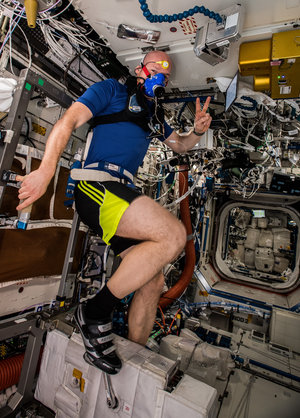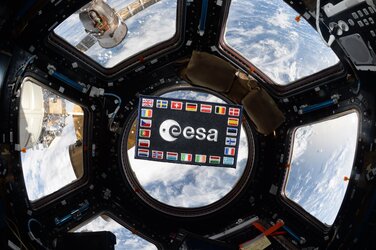European link to NASA spacewalk
ESA astronaut Thomas Pesquet is gearing up to guide NASA astronauts Anne McClain and Nick Hague from his post at NASA’s Johnson Space Center in Houston, USA, this Friday 22 March as they exit the International Space Station and step out into space.
During the 6.5 hour spacewalk, the pair will replace nickel hydrogen batteries with newer lithium ion batteries and install battery adapter plates on the Space Station’s Port-4 truss structure.
While four of the structure’s six batteries can be replaced by robotic arm, the last two require a human touch. It is a process Thomas knows well, having replaced batteries on another power channel during his Proxima mission.
As ground IV (intravehicular) for Anne and Nick, Thomas will be their key ground-based contact via radio. We asked him to tell us more about the task and preparation.
The lead up
Known to the crew as an EVA (Extravehicular Activity), each spacewalk is planned up to a year in advance. This particular spacewalk was originally scheduled to be performed during ESA astronaut Alexander Gerst’s Horizons mission, but postponed following the launch abort of Soyuz-MS10 carrying Nick and Russian cosmonaut Alexey Ovchinin in October.
On Station, Thomas says preparation begins around two weeks ahead, with a set of procedures called the “Road to EVA”.
“Preparing for a spacewalk will take up two to three hours of your schedule every day during this time,” he explains. “The crew often continue preparation in their personal time as well.”
In addition to familiarising themselves with their tasks and the worksite using a 3D model of the Station, astronauts must prepare any items they need to take with them. They must also service their spacesuits. This includes filling up the water reservoir, charging batteries and installing carbon dioxide scrubbers, among other tasks.


Access the video
Live coverage of Anne and Nick’s spacewalk starts on NASA TV at 10:30 GMT (11:30 CET), but the crew will begin their preparation much earlier. And there is to be no shaving, or applying deodorant for at least a day in advance, as any remnants of these products could mix with the pure oxygen inside the suit and pose a fire risk.
Astronauts wear a liquid cooling garment underneath their spacesuit. This is connected to the water system that keeps them cool, or warm, by circulating water around their body. They also don a medical monitor and put a dosimeter in their pocket to measure radiation before entering the airlock.
Thomas describes the process inside the airlock as “like scuba diving in reverse”, as astronauts breathe in a controlled way to rid their blood of nitrogen and adjust to lower pressure.
A third crew member, known as the Intravehicular (IV) crew member, helps the astronauts with their oxygen masks and into their spacesuits, while making sure everything is checked, tethered and ready for a safe and successful sortie.
Out in space
Before exiting the airlock, Thomas says, the overriding feeling is one of extreme focus.
“Everybody’s watching, so many people have been involved in the preparation, and the risks are so much higher when you are outside the Space Station,” he explains. “The only thing you can’t really prepare for are the day and night cycles.
“During the night, you only have your helmet light, so you can’t really see anything except what you’re working on. And because you’re working in all body orientations, it’s easy to get disoriented. But you know you can always follow your tether back towards the hatch.
After exiting the airlock, Thomas says one astronaut will prepare the worksite while the other breaks torque on the pre-positioned adapter plates. Each astronaut will then work to install the adapter plates, needed to replace two older batteries with one new one.
The spacewalk on 22 March is the first of three scheduled for the next three weeks and one of two that will focus on battery replacement. Current dates for the subsequent spacewalks are 29 March and 8 April.






















